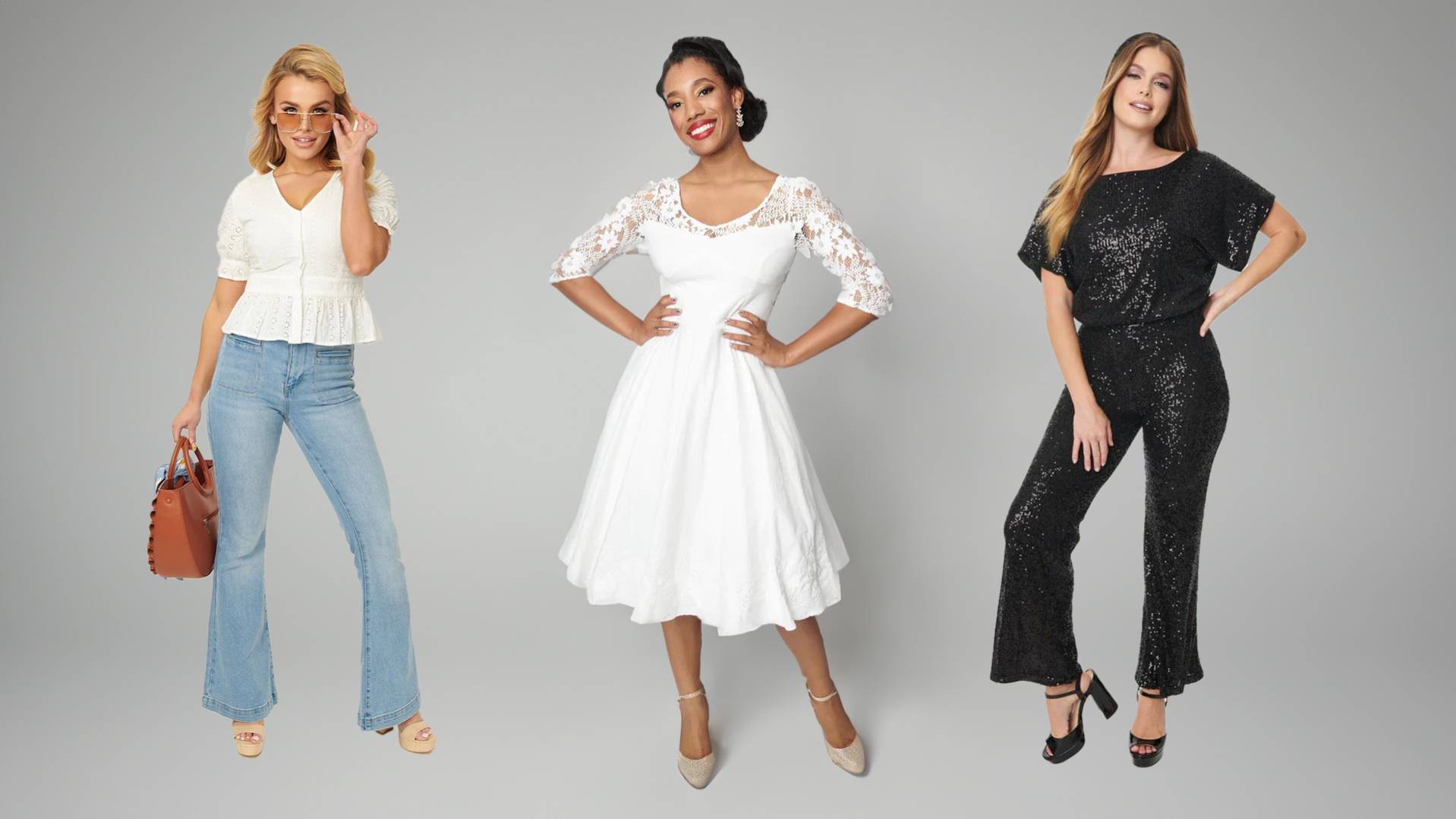The Role of Fabric in Defining Quality in Branded Clothing
The Role of Fabric in Defining Quality in Branded Clothing
Blog Article
Comprehending Apparel: The Relevance of Material Options in Your Closet
The option of material in apparel plays a pivotal function in both aesthetics and functionality. Different products offer varying degrees of breathability, convenience, and longevity, straight influencing the user's experience. Understanding these subtleties can boost one's closet noticeably. Many ignore just how these options can influence not just individual style, but also sustainability. What material choices could redefine your closet and straighten it with both design and obligation?
The Function of Textile in vogue and Functionality

Typical Fabric Types and Their Characteristics
When choosing clothes, recognizing the qualities of typical fabric types is important for making informed choices. Cotton, a widely-used all-natural fiber, is known for its breathability, gentleness, and adaptability, making it suitable for informal wear and day-to-day garments. Linen, an additional natural choice, boasts superb moisture-wicking residential properties and a distinctive appearance, suitable for cozy climates.Wool, typically preferred for its heat and sturdiness, differs in excellence; merino wool is soft against the skin, while coarser types are used for outerwear. Artificial textiles like polyester and nylon offer durability and resistance to wrinkles, making them popular for activewear and travel garments. Blends, which integrate synthetic and all-natural fibers, can improve functionality while maintaining comfort. By acknowledging these textile attributes, people can select clothing that straightens with their way of life and aesthetic choices.
Breathability and Comfort: Picking the Right Fabrics for Various Climates
Selecting the right materials for various environments can considerably enhance comfort and total wearability. Breathable materials are necessary in warm climates, as they allow air circulation and moisture evaporation. Fabrics such as cotton, linen, and moisture-wicking synthetics properly draw sweat far from the body, maintaining the user cool and completely dry. On the other hand, in colder environments, thicker materials like woollen or fleece offer insulation while keeping breathability, guaranteeing heat without overheating.Additionally, the option of fabric weight plays a crucial role; light-weight fabrics are more suitable for summer season, whereas heavier alternatives are fit for winter months wear. Recognizing the one-of-a-kind homes of each material makes it possible for individuals to dress properly for varying climate condition. Ultimately, choosing comfortable and breathable materials customized to details climates can significantly enhance daily convenience and improve the total experience of wearing clothing.
Sturdiness and Treatment: How Fabric Impacts Durability of Your Wardrobe
Choosing the appropriate materials can greatly impact the toughness and care requirements of a closet. Fabrics such as cotton and polyester are understood for their strength and simplicity of maintenance, making them perfect for daily wear. In comparison, fragile materials like silk and shoelace need even more cautious handling and specialized cleaning techniques, which can boost the moment and initiative needed for care. Branded Clothing.Durability is additionally influenced by the material's weave and coating; snugly woven fabrics have a tendency to resist deterioration far better than freely woven alternatives. Additionally, artificial blends frequently supply enhanced durability, combining the very best top qualities of multiple fibers.Understanding the care directions for each and every material is vital, as inappropriate drying out or washing can cause premature wear. Ultimately, selecting resilient materials can result in a longer-lasting wardrobe, minimizing the regularity of replacements and contributing to a much more sustainable fashion option
The Impact of Material on Fit and Silhouette

Lasting Fabric Choices: Making Eco-Friendly Decisions
The influence of fabric extends beyond fit and shape to incorporate ecological elements, prompting an expanding passion in sustainable material options. Green textiles, such as organic cotton, hemp, and Tencel, are gaining traction amongst customers who focus on sustainability in their wardrobes. These materials are usually generated with fewer chemicals and water, decreasing their ecological footprint.Additionally, recycled textiles, made from post-consumer waste, supply an ingenious service to the fabric market's pollution trouble. Brands increasingly welcome openness in their sourcing approaches, permitting consumers to make educated decisions regarding their purchases.Choosing lasting fabrics not just sustains honest practices however additionally encourages the fashion business to adopt more responsible manufacturing methods. As recognition of ecological concerns increases, people are advised to reflect on the lasting effect of their material options, promoting a movement towards a much navigate here more sustainable and eco mindful strategy to fashion.
Raising Design: Exactly How Textile Can Change an Outfit
While lots of might focus on color and cut when selecting a clothing, the selection of fabric plays a necessary duty in raising design and enhancing overall appearance. Different materials share distinctive state of minds and messages; as an example, silk shows high-end and class, while denim offers an informal, unwinded vibe. The texture and drape of a textile can dramatically alter the shape, with structured fabrics supplying a sleek look and softer ones creating a much more fluid, relaxed aesthetic.Moreover, the weight of the textile influences wearability throughout seasons. Lightweight fabrics like linen and cotton are perfect for summer season, while heavier materials such as wool and velour supply heat and elegance in colder months. Understanding textile residential properties, such as breathability and stretch, also encourages people to make educated selections that improve convenience without endangering style. Eventually, the right textile can change an outfit from normal to amazing, making it a vital factor to consider in any type of closet.
Often Asked Inquiries
Exactly how Do I Identify the Fabric Content of My Clothing?
To recognize material web content, one can analyze treatment tags, conduct shed examinations for fiber recognition, or seek advice from material examples. These techniques aid differentiate products, guaranteeing educated options for clothing care and maintenance in day-to-day wear.
Can Fabric Option Affect My Mood or Confidence?
Textile option can substantially influence a person's mood and confidence. Branded Clothing. Particular materials may stimulate feelings of convenience or elegance, while others can really feel limiting or uncomplimentary, ultimately influencing self-perception and psychological well-being throughout the day
What Fabrics Are Best for Sensitive Skin?
For individuals with sensitive skin, natural fabrics like bamboo, bed linen, and cotton are often advised. These products are breathable, hypoallergenic, and much less likely to cause inflammation, making them ideal selections for comfort and skin health and wellness.
Just how Do I Properly Clean and Take Care Of Various Fabrics?
To properly clean and care for various fabrics, one must think about each product's particular requirements, consisting of temperature level setups, cleaning agents, and drying out approaches, making certain durability and maintaining the material's initial top qualities for suitable usage.
Are There Specific Fabrics for Athletic or Efficiency Put On?
Athletic or efficiency wear commonly utilizes materials such as polyester, spandex, and nylon. These materials are developed for moisture-wicking, breathability, and flexibility, enhancing activity and convenience throughout exercises while giving longevity and support. Conversely, in cooler climates, thicker materials like woollen or fleece supply insulation while maintaining breathability, making certain warmth without overheating.Additionally, the choice of textile weight plays a crucial role; light-weight fabrics are better for summertime, whereas larger choices are fit for wintertime wear. In contrast, delicate materials like silk and lace call for more careful handling and specialized cleaning approaches, which can boost the time and initiative required for care.Durability is likewise influenced by the fabric's weave and coating; tightly woven fabrics have a tendency to stand up to wear and tear far better than loosely woven choices. In comparison, stiff textiles can limit motion but offer a classic, sleek look.Moreover, the density and texture of the material can affect the visual understanding of body shape. The effect of material expands past fit and shape to incorporate ecological aspects, triggering a growing passion in sustainable textile options. The appearance and drape check out this site of a fabric can significantly alter the silhouette, with organized materials offering a refined appearance and softer ones creating an extra fluid, kicked back aesthetic.Moreover, the weight of the fabric influences you could check here wearability across periods.
Report this page